Stephanie grabbed my hand and asked nervously, “Ready?” Not really, but what else could I say but “Yes”, we didn’t have any other option. There was no time to hesitate. We would be in big trouble if we did. They timed it just right so they wouldn’t hit us. We’d feel their exhaust hot on our legs as they went by. So we closed our eyes, held our breath, and walked into the lion’s den.
The “lion’s den” in this case being not a literal cave with a hungry lion waiting inside, but instead, an even more deadly flood of speeding, swerving pick-up trucks, buses, tuk-tuks, and mopeds with whole families crammed onto them babies and all on one of the busiest streets in Phnom Penh, Cambodia. (Stephanie and I actually had a running bet going about how many people could fit on a moped. (Answer: We saw five at one point).) I had been here for nearly four hours, and I still wasn’t exactly sure what side of the road they drove on. I had a sneaking suspicion that it didn’t really matter.
But, for the sake of suspense (I know you’re all wondering whether I made it across the street alive), let’s rewind a few weeks. To be completely honest, I don’t even really remember them. It is sort of a blur of lesson planning for hours on end sustained by Venti Starbucks coffees….black, sitting though endless planning and best practice meetings sustained by bad instant coffee…black, and a staff dinner and PiA party sustained by and recovering with wine…white AND red.
For the past two weeks, I have been working on the lesson skeleton, aka scheme of work or SOW, for my two classes next year. I will be teaching the two secondary two normal academic classes. Secondary two is the equivalent of our eighth grade, and the normal academic students are right between the express level and normal technical as far as ability goes according to the ranking system. After creating my SOW, revising my SOW, and rearranging my SOW, I’m still, today, working on my SOW and will be throughout Christmas break. That’s what happens when you get a new teacher who also happens to be an extreme perfectionist working on SOWs I guess. But, regardless of the insane amount of work, I’m really excited to start teaching my own classes in January. I will also be helping the music classes add a movement/dance component to the syllabus, and I’m choreographing the school’s musical as well. I consider myself truly lucky to be doing things I excel at and enjoy for my job, not-to-mention my job allows me to pop over to Cambodia for the weekend.
Amidst the craziness of lesson planning and staff retreats, I also had the opportunity to attend an end of the year banquet with my colleagues, the theme of which was “Kampong Glam”. We all dressed in traditional Malay costumes (mine borrowed of course), and enjoyed, what else, but a huge dinner. The dinner took the format of a Chinese wedding feast, complete with eight courses, and a presentation of the food that included flashing lights, dancing waiters, and cheesy “wedding” songs. Notable among the many courses was squid, sushi, warm almond flavored soup for dessert, and shark’s fin soup. I had a difficult time eating the shark’s fin soup, as after one bite my mentor informed me that hunter’s illegally hunt the shark, cut off their fins, and throw them back into the ocean to die. Ok, so I was under-exaggerating when I said I had a hard time eating it after that, I mean I could barely hold back the vegetarian-animal-rights-activist-in-me tears.
The problem is that old traditions die hard. Shark’s fin soup has been an integral part of Chinese wedding celebrations forever, and as long as there is demand, there will be supply. Shark’s fin soup aside though, it was a really enjoyable evening made even more exciting by the various dances we were made to choreograph and perform with our table-mates. Watching a bunch of your colleagues make fools of themselves…now that’s entertainment.
On the evening following my teachers’ banquet, I attended the launch party for the PiA Singapore-based office. It was a lovely evening at a quaint wine bar during which I served wine and smoozed with the big wigs for the first half, and drank wine and chatted about winter holiday plans with my fellow PiAers for the second half of the evening. It still amazes me that combined my friends and I will see Beijing, Cambodia, Nepal, Laos, Vietnam, Thailand, Bali, and India all in December. And, Stephanie and I launched the excursions with our trip to Cambodia this past weekend.
We arrived in the insanity that is Phnom Penh, Cambodia’s capital city, on Saturday morning at 7:45 a.m., and thus commenced our street-crossing extravaganzas. After checking into our lovely and conveniently located hostel, we literally ran across the street to the Royal Palace for our first tour of the day. Cambodia is officially known as the Kingdom of Cambodia, and, while there is a king, he is primarily a symbolic figure who acts as Head of State today, with the government being a Parliamentary Representative Democracy. Regardless of his power or lack-there-of, our tour guide informed us that the king is a former ballet dancer and a bachelor, both of which make him ok in my book. Despite our valiant efforts, Stephanie and I were unable to catch a peak of the king, though the blue flag flying high above the daffodil-colored walls told us he was in residence. (Side-note: He’s also in his 50’s, so sorry for those dreaming of a young, dancing Prince Charming).
First on the tour of the palace grounds was a strangely beautiful tree from which flowers are taken to make malaria medicine. The bark is twisted and ugly, yet the most enchanting flowers emerge from the strange branches; a lovely symbol of the healing process that Cambodia is undergoing since the reign of the Khmer Rouge (more of this to come).
We then followed our guide to the extravagant Throne Hall, which was first built of wood in 1869 and redone as it is today in 1917. Royal coronations and weddings still take place in the building, the floor of which is covered in a huge one-piece carpet that was a gift from China. The hall also holds the pure gold busts of kings of the past, which escaped the Khmer Rouge because they were buried in the mountain region along with other treasures before the king himself escaped to Beijing. From the Throne Hall we could see the king’s residence and the Moonlight Pavilion, on which the Royal Cambodian Ballet, and sometimes, the king himself, still perform.
We walked through the ground’s gardens, stopping occasionally to ogle the stupas, which are Buddhist burial places for ashes, and the elephant statues. In the past, the king rode white elephants during parades and festivals etc., but because the Khmer Rouge killed the country’s population of white elephants, the king is now carried by his staff during such occasions. Despite the fact that they were all destroyed, the white elephant is still a prominent symbol in Khmer art and architecture. This, again, I believe is symbolic of the Cambodian peoples resilient spirit.
The final stop on our tour was the Silver Pagoda, named such because of the more than 5,000 silver tiles covering its floor. The locals also refer to the pagoda as the Emerald Buddha, because of a beautiful emerald Buddha statue that sits high atop a shrine near another Buddha statue encrusted with 9,584 diamonds. These treasures, and many others found inside the Silver Pagoda, were also buried in the mountains during the Khmer Rouge’s reign of terror and thus escaped from being destroyed.
Interested to know more about the Khmer Rouge, Stephanie and I grabbed a quick lunch on a balcony overlooking the river, before heading to S21, a Khmer Rouge “museum.” I put the word museum in quotes, because a visit here feels more like a visit to a concentration camp in Germany than to a museum. This former high school was converted into a prison and torture chamber by the Khmer Rouge from 1975-1979. Small cells still contain the Khmer Rouge’s instruments of torture, blood stains are visible on the walls, and pictures of the “inmates” hang in a display room, faces gaunt from starvation and eyes wide with fear or half-closed in defeat; men, women, children, even babies, all staring blankly into a camera held by the people that will eventually kill them.
The leader of the Khmer Rouge, Pol Pot, came to power in a situation similar to that in which Hitler did; a country in shambles (because of the Vietnam war) and in need of strong leadership. Soon after entering Phnom Penh to wild cheers from the people, Pol Pot evacuated the city dwellers to the countryside in pursuit of a “purer” agrarian society. His army captured, persecuted, and killed intellectuals, doctors, teachers, any one who was educated and did not hide it or anyone who spoke out against the government. Of the 20,000 prisoners who came to S21 during the Khmer Rouge’s reign, a mere seven survived.
Stephanie and I spend a silent four hours walking the halls, our footsteps hauntingly echoing in the former torture chambers, reading, with growing horror and thickening sadness, the stories of the prisoners and Khmer Rouge leaders themselves. I’m still shocked by how little I knew about the history of the Khmer Rouge. Even more shocking to me though, many of the former leaders and murders who worked under the Khmer Rouge lived freely and were not charged for their crimes until 2007, nearly thirty years after these atrocities against humanity occurred. All I could say as I left was to echo the pleas of those who survived the reign of terror; what happened to “never again?”
After our visit to S21, the lingering effects of the Khmer Rouge’s reign of terror became acutely apparent. I have never seen such a young society. There are so many young families and children, primarily due to the fact that such a large portion (over three million) of the country’s population was killed in the 1970s. In addition, nearly 90 percent of Cambodia’s people are farmers. Yet, the country has started to rebuild itself, a beautiful testimony to the resilience of the human spirit. In a country still struggling to get back on its feet, I have never seen so much blatant happiness; yelling, laughing, honking, winking, begging, hugging, living and most of all, simply smiling. As our Angkor tour guide would tell us the following day, “We are told to smile like the Buddha.”
After our visit to S21, Stephanie and I needed to feel and see this resilience again, and what better way, than to put our own lives at risk to cross the street to a market. We wandered through the crowded alleyways haggling for scarves, street art, and trinkets, all the while trying to avoid stepping on the fish heads that the vendors were chopping off right on the street and the pig’s hooves that the woman was slicing off the pig’s leg on top of that table over there (over there because we decided not to get too close).
Following our colorful and exciting market experience, we met Stephanie’s friend Emma and several of Emma’s friends for a traditional Khmer meal. The restaurant is run by an organization that takes kids off the street and trains them to be waiters/waitresses, hosts, and cooks. We then went out to experience a bit of the small but lively expat nightlife of Phnom Penh. Business men and women in suits at a velvety bar stands in stark contrast to the small barefooted boy, who followed me for nearly two blocks today trying to convince me to eat at his family’s food stall by pointing at his mouth and saying “num nums.” (Another side-effect of the Khmer Rouge is the lack of a middle class in Cambodia. The people are either very wealthy or very poor. And, unfortunately, the very wealthy are often not Cambodians themselves.)
On Sunday morning, Stephanie and I were once again up with the sun as we had to catch a bus to Siem Reap, which is the town near the Angkor temples. We thought we could probably sleep on the five hour ride to Siem Reap. We thought wrong. The “highways” in Cambodia are not exactly like the highways in the U.S. or Singapore to say the least, and we were lucky if we went five minutes without bouncing into and right back out of a giant pot-hole. In addition, the bus drivers drive on the highway similarly to the way they drive in town. Enough said.
Despite all this, the ride was oddly charming. The bus wound through, and sometimes into, rice fields as far as the eye could see. Most men, women, and children harvested the rice by hand, while the lucky ones drove the family’s cow through the fields. Occasionally, we came upon a village with houses sitting on stilts with woven roofs and no doors. Half-naked children ran in and out of the small ponds playing rope games while fathers gave the family cows a bath in the same ponds, and mothers cooked over open fires. I’ve never seen so much poverty in my life. I’ve also never seen so much pure, simple happiness.
When we arrived at our hostel in Siem Reap, we were pleasantly surprised by its grandeur, inclusive of beautiful wooden statues and a spiral staircase at the entryway. Even more exciting though, the crocodile farm out our back window. When we asked, we were told they export them to Vietnam. When we asked why, they said they didn’t know. I’m not sure I want to know really, but if I had to guess, if you own a pair of crocodile boots, they may have come from my hostel in Siem Reap.
The remainder of the afternoon was spent wandering through Siem Reap, a smaller and less hectic version of Phnom Penh, stopping to browse at the various souvenir stalls and for a massage, greatly needed after an interesting bus ride. In the evening, we enjoyed a meal of vegetable curry, rice, ginger shrimp, spring rolls, and coconut rum shakes at the Butterflies Gardens, a restaurant with a similar premise to the one from the night before but set in a garden with real butterflies. Exhausted, Stephanie and I went to bed early, needing rest for our full day at the Angkor temples the next day.
Monday morning we were met at the front of our hostel by our tuk-tuk driver, Mr. Sampo, and our guide, Veutha. After toast and coffee, we set off for the temples. The temples of Angkor number in the thousands, but one can visit the main temples in a few days. First stop: the “Angelina Jolie” temple (because scenes from Tomb Raider were filmed here), aka, Ta Prohm. Ta Prohm was built by Jayavarman VII, a ruler who built many many temples during his reign and who Veutha often refered to as “the builder” to help Stephanie and I remember. Ta Prohm was built as a Buddhist monestary and university, but today is famous because it has been left in much the same condition in which it was found: a photogenic and atmospheric combination of trees growing out of the ruins with the jungle surroundings.
We made a quick stop at Pre Rep, one of the artificial mountain temples; aptly named, I believed, after I had scaled the steep stairs to reach the top where the shrines to the ancestors were located. We then continued our journey to the furthest of the temples we visited called Banteay Srei. Along the way we passed more traditional Cambodia villages, and Veutha shared with us his own experiences growing up on a farm as a cowboy. I had to laugh when, later in the day, Stephanie and I taught our Cambodian cowboy guide how to play Marco Polo while riding in a tuk-tuk at the ancient temples of Angkor; an oddly satisfying, ecletic experience yet again.
Banteay Srei is more red in color than any of the other temples, because it was built from a different type of sandstone. The walls of the temple are elaborately decorated with beautiful carvings, all of which depict Hindu epics. It’s name means citadel of woman or citadel of beauty. Which, of course, it was.
On the way back through the villages, we stopped to watch two Khmer women make candies. The long process involves, first, men climbing up the palm tree to obtain the fruit. Then women extract the sap from the fruit and boil it for several hours until it turns into a sugar paste. The women fill small circular molds with the paste and let it harden in the sun to form candies. Though the women couldn’t speak English, the kept shyly looking at Stephanie and I as Veutha explained the process and even gave us a sample of the sugary sweet.
We stopped at another mountain temple, before settling down to lunch at one of the villager’s food stalls. Veutha told Stephanie and I later that the women at the stalls kept talking about how beautiful we were, and one even joked that she had a few single brothers. Ironically, Stephanie and I were talking the whole time about how beautiful these young women were. Girls will be girls despite cultural and language differences I suppose.
The rest of the afternoon was spent wandering around a shaded temple with a main pond and four smaller ponds, each with a shrine representing earth/human, fire/lion, wind/horse, and water/elephant. (I asked Veutha where the heart pond was. He must not have watch Captain Planet as a child, because he didn’t really get it.) During the dry seasons the ponds dry up, but during the rainy season they fill so much that water flows out of the shrine’s mouths like a natural fountain.
The last temple for the day was another built by Jayavarman VII called Preah Khan, or Holy Sword, because it may have housed the king’s sword. Stephanie’s favorite temple, Preah Khan was once the center of a substantial organisation, with almost 100,000 officials, servants, dancers, and teachers. The temple is flat in design, with a basic plan of successive rectangular galleries around a Buddhist sanctuary complicated by Hindu satellite temples and numerous later additions. The king’s of Angkor often switch from Buddhism to Hinduism and back again. Like the nearby Ta Prohm, Preah Khan has been left largely unrestored, with numerous trees and other vegetation growing among the ruins.
Finally, we stopped briefly at Angkor Thom, a walled city, to visit the Terrace of the Leper King and the Terrace of Elephants, both stage-like structures covered with emaculate carvings. To end the day, Stephanie and I hopped on an elephant to take us to the top of the hill for sunset. Yes, I did just say hopped on an elephant like it was a completely normal thing to do, but in the moment it really seemed fitting. I mean, extravagence was nothing for the kings and queens of Angkor.
Tired from our long day, Stephanie and I showered before heading into Siem Reap for a seven dollar facial, a drink, and some live music. We needed to rest. The next day…sunrise.
So at 4:45 a.m. on Tuesday morning, Stephanie and I were back in the tuk-tuk with Veutha happily chatting about the history of the temples, and Mr. Sampo driving us back to Angkor Wat, the most famous temple in the complex. Walking across the moat in the pitch black morning with moisture hanging thick in the air, mist caressing the peaks of the lotus-bud towers of Angkor Wat barely visible in the distance is something a picture cannot capture and words cannot fully do justice. A wild, yet strangely calm, sense of anticipation is building up inside you. You know what’s coming. The sun is going to rise behind this grand, awe-inspiring temple and you are one of the lucky few that gets to watch the world wake-up at Anchor Wat today. No one will ever see this exact scene again. Yet as much as you want it to happen, you don’t. Once it starts, it will have to end. It is almost too painful to think about it ending, so maybe it’s better if it just doesn’t start in the first place.
Watching the sunrise at Angkor was the most amazing moment of the trip for me, and quite possibly, one of the most wretchingly beautiful things I’ve ever witnessed in my entire life. I wish I could describe the way the sun looked as its light apeared through the slits in the clouds and as it turned Angkor into a black silouette against a brilantly pink and orange sky. I wish I could paint a picture with words of the wavey reflection of the five giant towers in the lily covered pond, birds and insects coming to life with the sun. I wish I could transfere onto paper the feeling of heart pounding excitement and muscle tingling calm one feels as the full grandure of this twelvth century masterpiece is unveiled by mother earth. But alas, I cannot. No words, nor pictures can do it justice. The experience cannot be replicated for others, but must be lived for oneself.
After the sunrise, Veutha took Stephanie and I on a tour of the temple. As the best-preserved temple at the site, Angkor Wat is the only one to have remained a significant religious centre since its foundation—first Hindu then Buddhist. The temple is the epitome of the high classical style of Khmer architecture. It has become a symbol of Cambodia and even appears on its national flag. Bas-relief carvings, each depicting a part of a Hindu epic or the everyday life of twelvth century Cambodians, cover the walls surrounding the temple. Within the temple lies the Hall of a Thousand Buddhas, which now holds only a handful of Buddhas, because due to theft, many have been moved to the National Museum. Stephanie and I found ourselves rather amusing as we refured to the hall as the Hall of a Handful of Buddhas. I don’t know if Veutha found this quite as hilarious as we did. Also, of particular interest to me, were the many carvings of apsaras lining the walls. Apsaras are female spirits of the clouds and water in Hindu and Buddhist mythology. They are also particularly proficient at dancing.
After leaving Ankor Wat, we visited the Bayon which is at the center of Ankor Thom city. The Bayon is a beautiful arcitectural feat made up of several towers and a total of 48 massive smiling stone faces. After taking the typical “kissing the Buddha” tourist picture (similar to the “holding the Tower of Pisa” tourist picture), the remainder of the morning was spent visiting two smaller temples, and then finaling climbing the unfinished artificial mountain temple to enjoy a beautiful view and a cool breeze. On the way out of Angkor, I requested a detour past Angkor Wat for one final look at the breath-taking temple.
Stephanie and I had lunch at a street stall complete with flies, cats, dogs, old women cooking over open fires and all (some things are just worth the risk), before saying goodbye. Stephanie was headed to Thailand to spend Thanksgiving with her aunt and uncle, and then she is onto Laos and Vietnam for the remainder of our break. I boarded the crazy bus back to Phnom Pehn for my flight out the following morning. Maybe the road was smoother, but more likely I was just exhausted, because I slept most of the way back to Phnom Pehn, waking only to watch the sunset over the rice fields. I had a quiet Mediteranean meal with three French backpackers and watched CNN and Animal Planet at my hostel before going to bed.
Wednesday morning I flew back into Singapore, and spent the afternoon playing catch-up, paying bills, doing laundry and all. Thanksgiving day was atypical to say the least. My friend Jacob and I spent the day lazying on the beach before meeting Stephanie’s friend, Jens who is traveling, and some of Jacob’s Singaporean friends for Indian food. Surrounded by great people, enjoying good food and conversation, and watching the sunset over Singapore, the only things I really missed were my family, the Macy’s Thanksgiving Day parade, and Grandma’s mashed potatos. Ironically, I even spent the Friday after Thanksgiving Christmas shopping…my own version of Black Friday in Singapore.
Today is Saturday. I spent most of the day at my school’s open house, which is basically a day when perspective secondary one students come visit the school and we try to convince them that Commonwealth is the best place for them. Essentially, it’s college recruitment for 13-year-olds. But now I’m officially on “vacation” (Cambodia was like the pre-vaca to the vaca), and am packing to leave for Beijing tomorrow. Yep, Cambodia and Beijing in one week. This is Asia.
I’ll try to keep everyone posted while I’m in Beijing, but forgive me if I’m distracted by the Forbidden City, Great Wall, Summer Palace, 2008 Olympic venues and all the other wonderful experiences that will make up my near future. See you in the states in just over a week.
Goodnight, TiA, Cheers,
Rachel
Saturday, November 28, 2009
Subscribe to:
Post Comments (Atom)



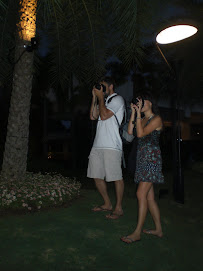

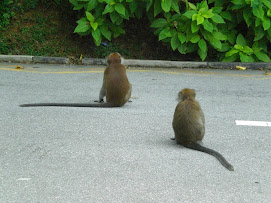
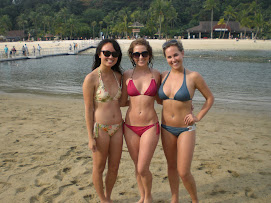

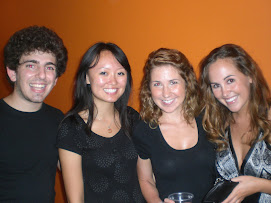

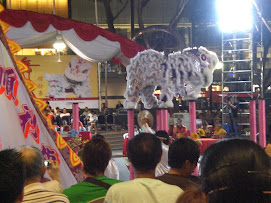
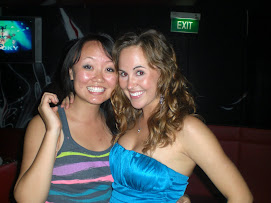
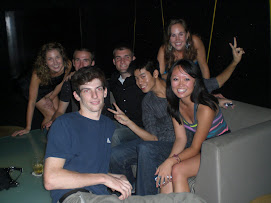
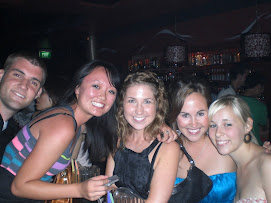

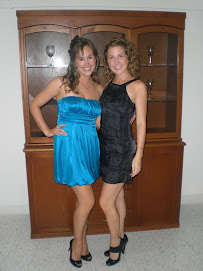


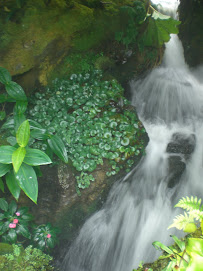

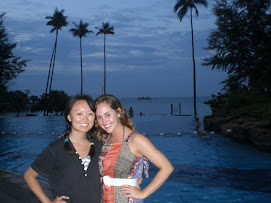
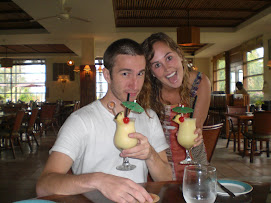
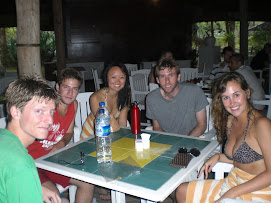
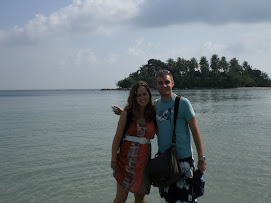
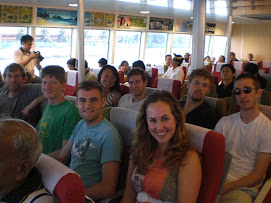
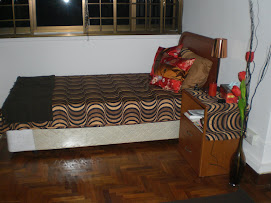
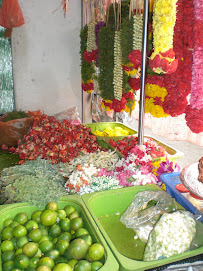


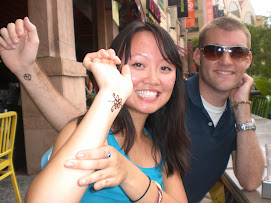
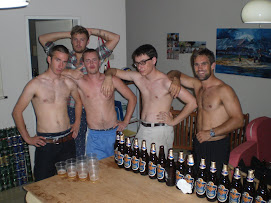
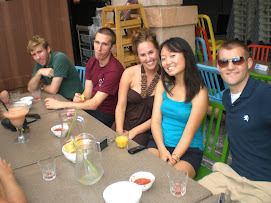
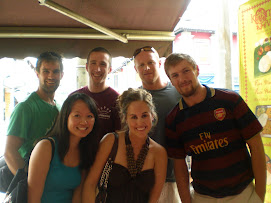


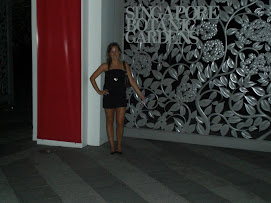
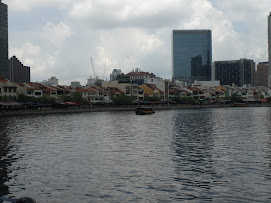
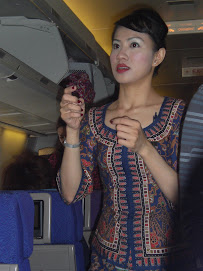


No comments:
Post a Comment